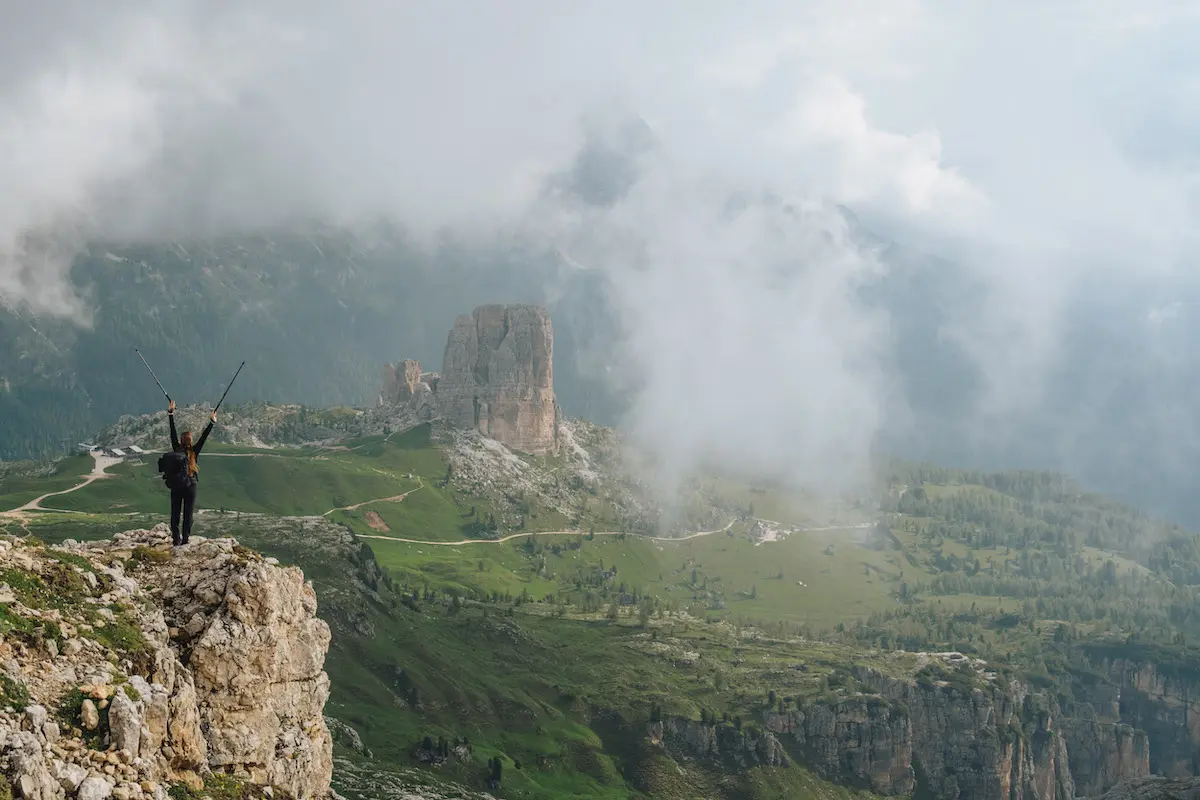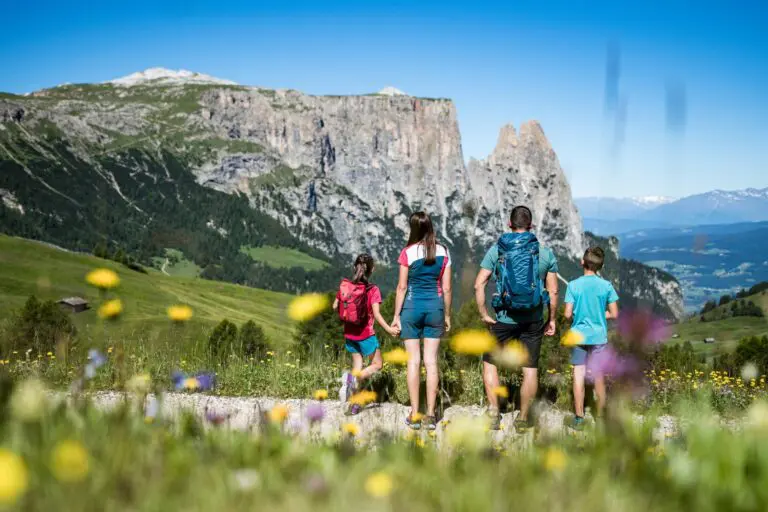Dolomites Again: Best Time to Travel for Your Hut Trek + Practical Tips
Imagine this: you wake up in an authentic mountain hut, open your window, and gaze out over a sea of pink mountain peaks in the morning light. The air is crystal clear, and in the distance, you can hear the early cows with their ringing bells. This is daily life during a hut-to-hut trek through the Dolomites.
This mighty mountain range in Northern Italy is famous for its dramatic peaks, hidden lakes, and unforgettable sunrises. A multi-day hike is the best way to explore iconic spots like the reflective Lago di Braies, the majestic Tre Cime di Lavaredo, and the photogenic Cadini di Misurina. But the weather in the Dolomites can be unpredictable – that's why we're sharing all our local knowledge to make your trek unforgettable.
Tips from our team
- Best time for a hut hike in the Dolomites: mid-June to late September
- Most stable weather: July and August
- Always pack warm layers and rain gear – the weather can change quickly
- Check the weather forecast daily at bergweer.eu
- Download offline maps – mountain weather can affect mobile reception
- Visit Lago di Braies early in the morning for the best photos
Dolomites again by season: when are you heading out?
Spring (April-May)
Spring in the Dolomites is a spectacular sight. Down in the valleys, nature bursts into life with alpine flowers, while the mountain peaks are still covered in snow. The weather can be unpredictable, with temperatures ranging from 5-15°C. Many mountain huts are still closed, and some trails may still have snow. It's perfect for day trips in the lower regions, but for a complete hut-to-hut trek through the Dolomites, it's better to wait until June.
Summer (June-August)
The most popular time for hiking in the Dolomites, and for good reason! Temperatures are pleasant (15-25°C in the valleys, 10-20°C in the mountains) and most of the snow has melted. July and August offer the most stable weather and are perfect for a multi-day hut trek through the Dolomites.
Tip: Early July is perfect for those who enjoy stable weather and quieter trails.
Autumn (September-October)
September is also a great month in the Dolomites. The weather is often stable, with clear skies and pleasant temperatures (10-20°C). However, from the end of September, things get trickier: temperatures drop significantly (especially at night down to around freezing), the days get shorter, and there's a higher chance of prolonged rainy periods. Many mountain huts close their doors at the end of September, and there might be early snowfall at higher altitudes. In October, a hut-to-hut trek is therefore not advisable – the weather conditions are too unpredictable and many facilities are closed.
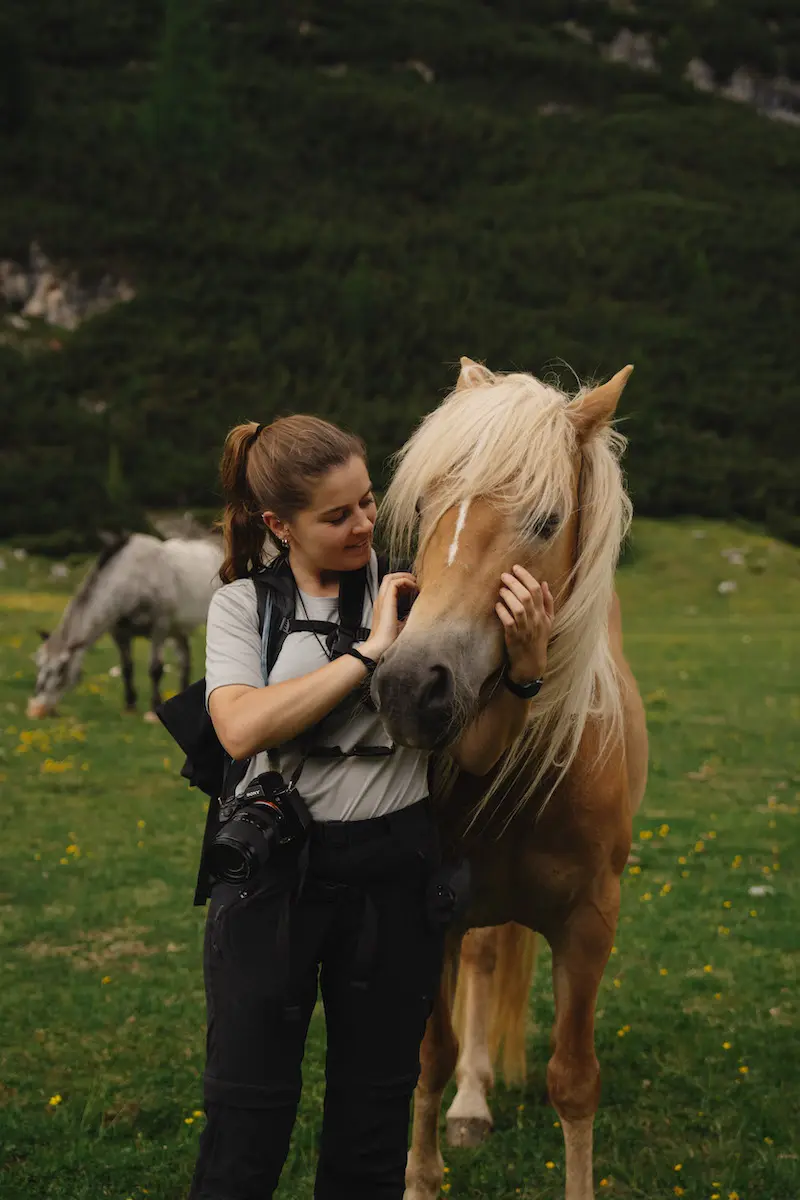
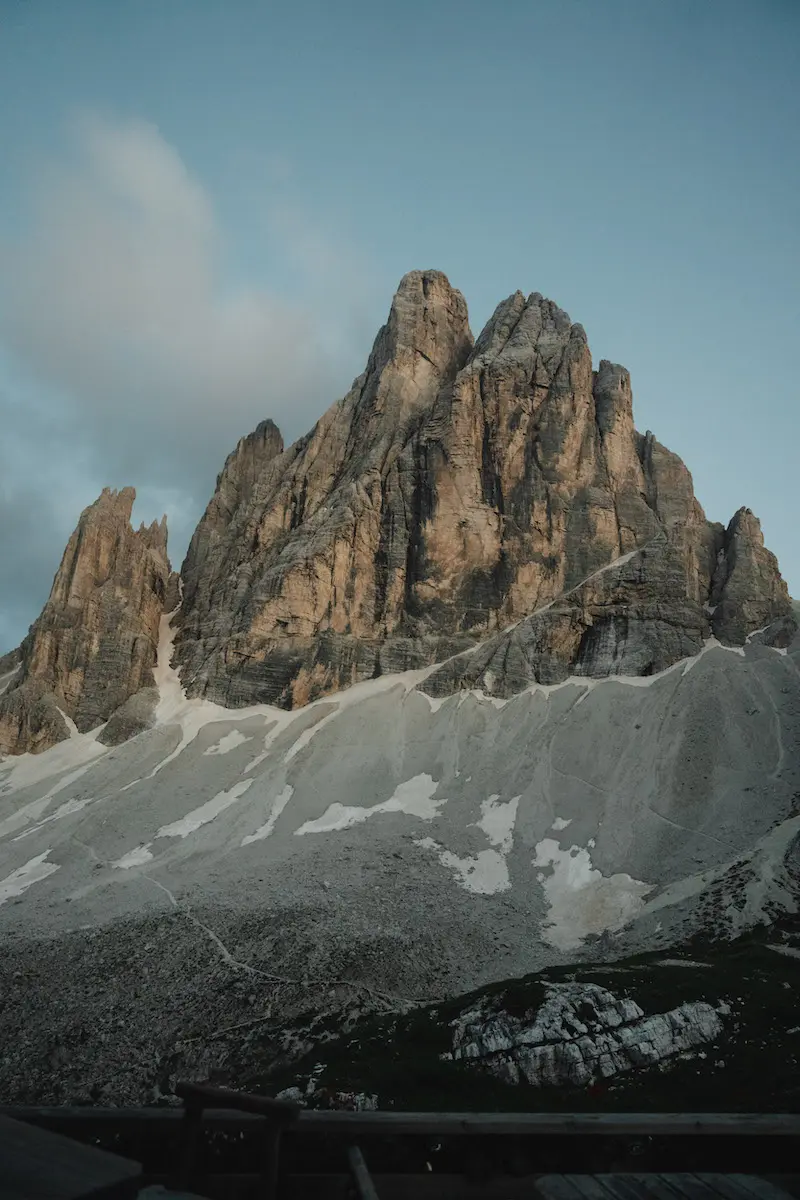
The weather in the Dolomites: what can you expect?
The Dolomites have a unique microclimate. Due to their location between the Mediterranean and Alpine climate zones, the weather can change quickly. Here are a few interesting facts:
- The mountains 'create' their own weather: warm air from the valleys rises and can cause thunderstorms in the afternoon
- The famous “Enrosadira” effect (where the mountains turn pink) is best visible on clear days
- Average rainfall is highest in June, but it often comes as short afternoon showers
- Even in summer, temperatures above 2500m can drop below freezing
Hiking in the Dolomites: weather by day
The daily weather pattern in the Dolomites is quite predictable. Most of the time, you start the day with a clear blue sky. Perfect for that iconic sunrise photo at Tre Cime! As the day progresses and the sun warms the valleys, cumulus clouds begin to form. These can develop into thunderstorms in the afternoon.
During our hut-to-hut trek through the Dolomites, we make smart use of this. We start early, when the weather is still stable. The Dolomite sights are at their best, and you have the best visibility. By the time any thunderstorms develop, you’re usually already at the next hut.
Practical weather tips for your hut trek
Clothing and gear
The weather in the Dolomites calls for a smart packing list:
- Layers are key: start with a thermal undershirt
- A waterproof jacket is essential
- Gloves and a hat (yes, even in summer!)
- Sunscreen and sunglasses (the UV radiation is intense at altitude)
- Trekking poles for slippery paths after rain
Hiking in unpredictable weather
If the weather in the Dolomites isn't cooperating:
- Start extra early to avoid afternoon showers
- Have alternative routes ready
- Download a weather app with local mountain weather reports
- Check with the hut wardens – they know the local weather best
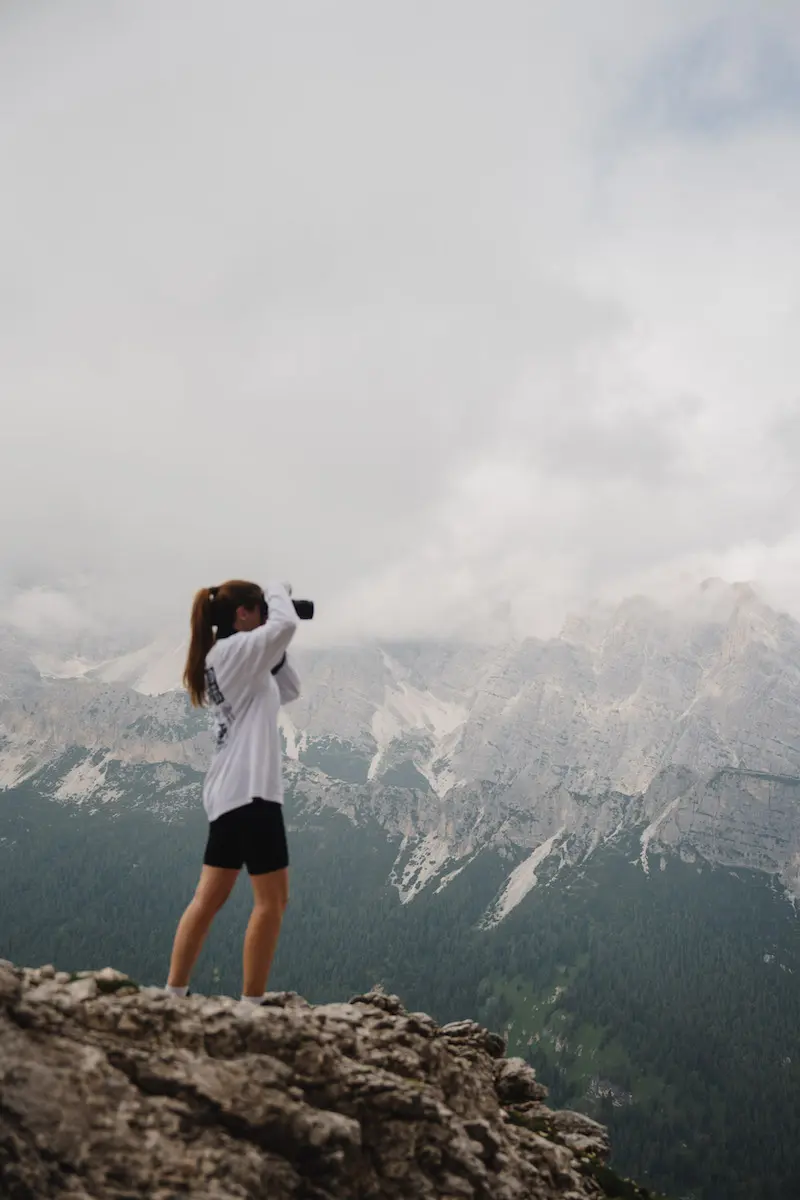
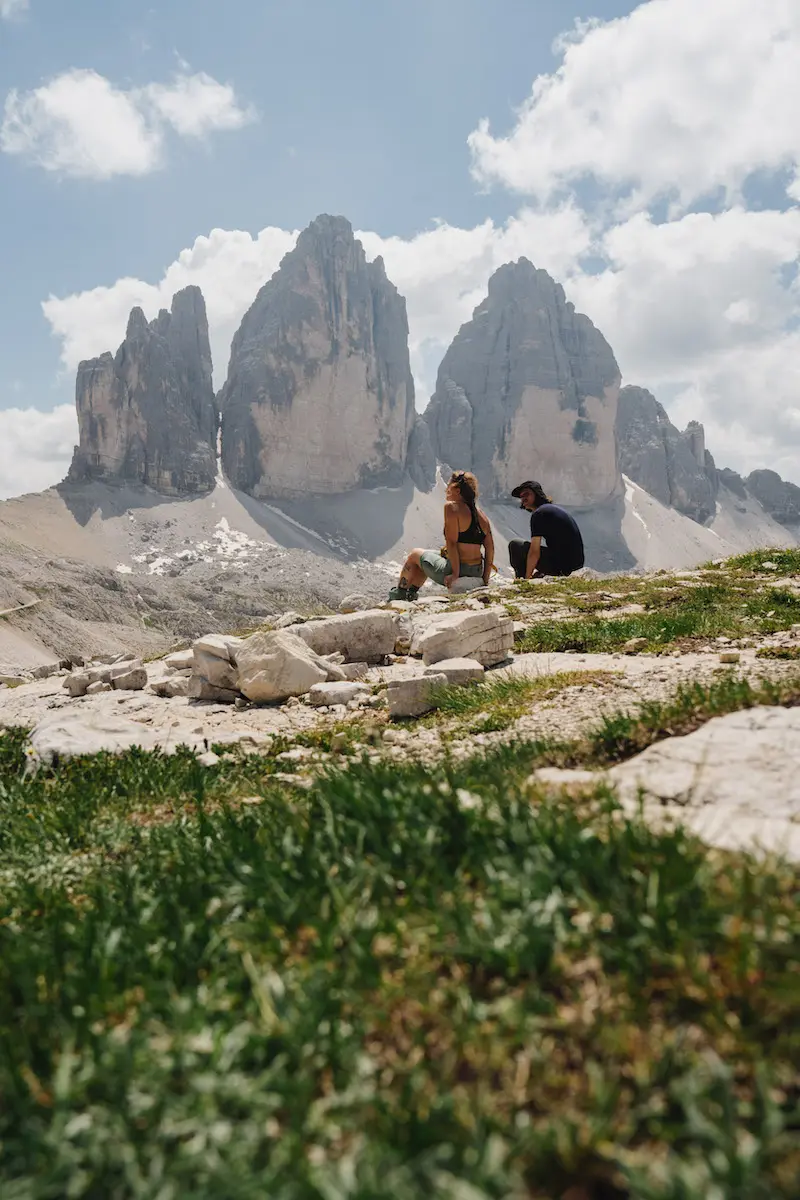
The best moments: when do you see what?
Morning Twilight (5:00-8:00)
The best time for photographers! The weather in the Dolomites is now at its most stable. The sky is clear and the mountains turn pink in the first light. Perfect for that dream shot of Lago di Braies or the first hikers at Tre Cime.
Afternoon hour (11:00-15:00)
Usually warm and sunny, but keep an eye on the sky. If cumulus clouds start to form, it's wise to have the exposed sections of the route behind you.
Evening light (7:00 PM - 9:00 PM)
If the weather cooperates, you'll be treated to a spectacular show. The limestone peaks catch the last light and turn pink again – the famous Enrosadira effect that makes the Dolomites so special.

